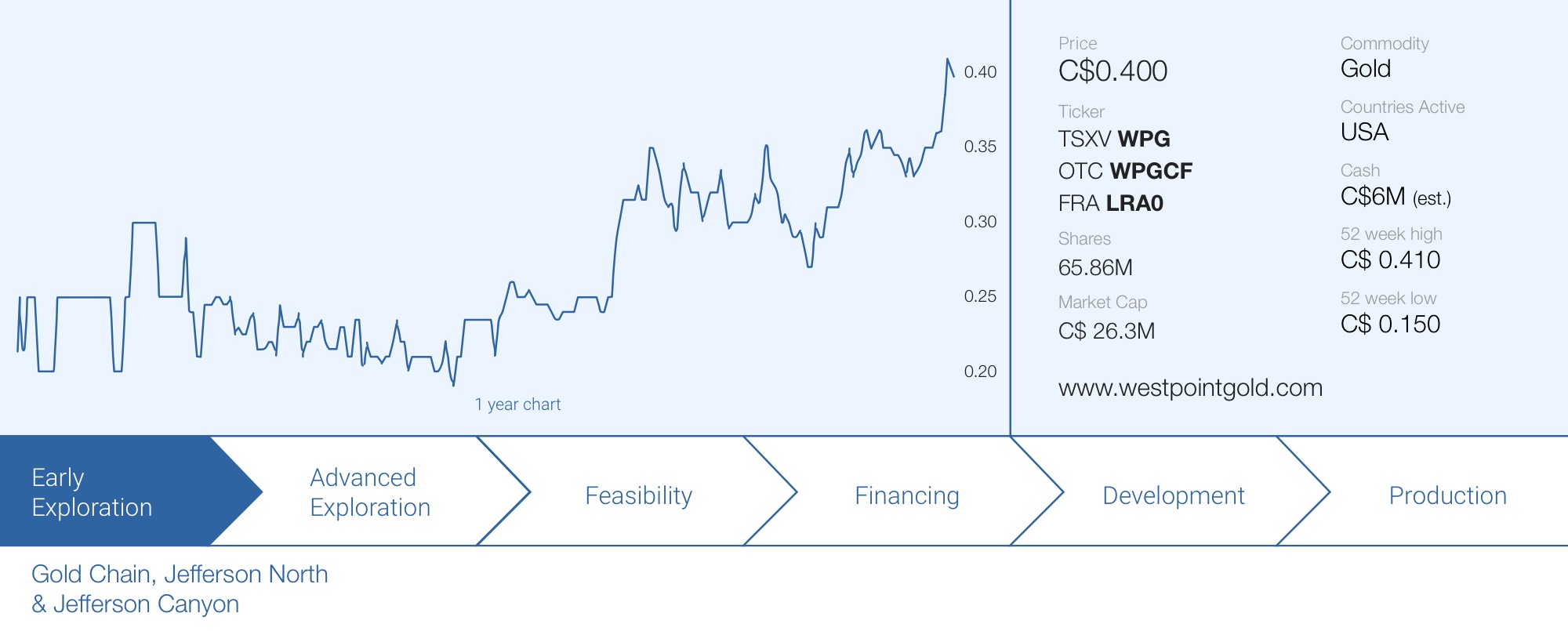
Sometimes exploration companies need a thorough rebranding in combination with a new management to breathe some life into an existing project that isn’t fully appreciated by the market. Gold79 Mines was sitting on a very interesting project in Arizona called Gold Chain but just couldn’t get any traction despite good drill results and its market capitalization spiralled down to just a few million dollar.
The company was revived through a merger with Bullet Exploration and a new team took over the reigns after successfully raising in excess of C$6M, changing the name of the company to West Point Gold (WPG.V).
Gold Chain in Arizona remains the flagship project but the merger with Bullet Exploration also expanded West Point Gold’s portfolio in Nevada where it also has a joint venture with Kinross Gold (KGC, K.TO) on one of the projects close to Round Mountain.
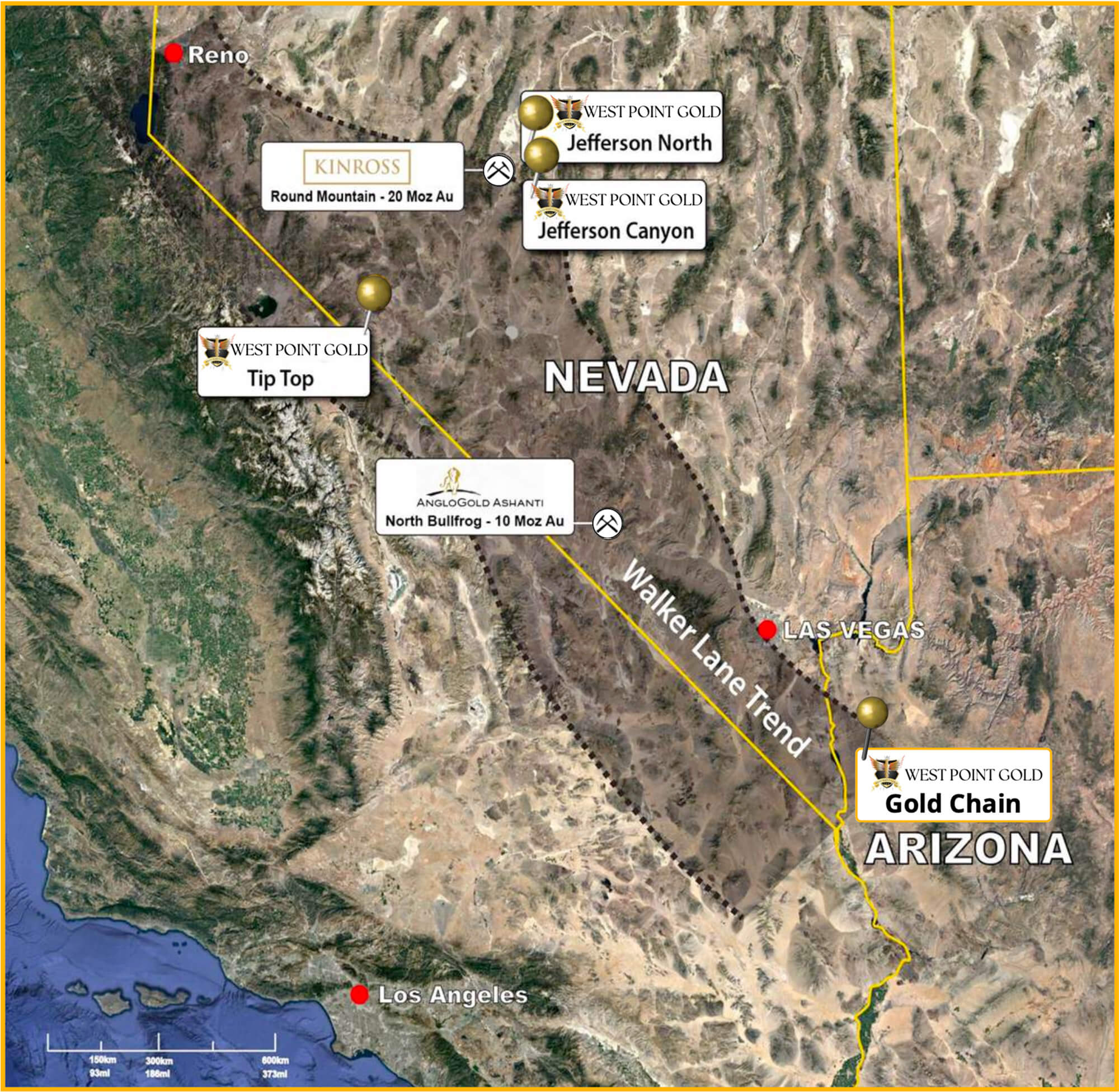
Recent drill results at Gold Chain expand the high-grade mineralization
While the capital raise in Q4 2024 was still ongoing, the new team behind West Point Gold didn’t want to waste any time and decided to hit the ground running. The proceeds of the first tranche of the financing were used to complete a core drill program at Gold Chain, the flagship assets. Gold Chain is a large scale low-sulfidation epithermal gold system in the Oatman district in Arizona and that area could be seen as the extension of the Walker Lane Trend which hosts several large mines like Kinross’ Round Mountain project as well as the historical Comstock Lode mine and (development stage) projects like Centerra-owned Goldfield in Nevada. The Walker Lane trend has a historical cumulative production of 40 million ounces of gold.
This specific area in Arizona is quite prolific. The Moss mine was developed as a low-grade heap leach mine but high production costs resulted in the company failing to meet its debt obligations and creditors pulled the plug before Mako Mining (MKO.V) recently acquired the assets out of receivership with the full intention to ramp up production. Additionally, Arizona Gold & Silver (AZS.V) borders the Gold Chain project and although Arizona Silver currently does not have an official resource yet, it wouldn’t be a surprise to see 1-2 million ounces gold-equivalent (the company has an exploration target of 2-5 million ounces of gold). Also keep in mind the land package around the Moss mine was never thoroughly explored as the company operating the mine simply didn’t have the cash resources to do so, so the current resource of 0.5 million ounces at Moss is likely just a fraction of what’s really in the ground there. Even though Arizona is better known for its copper mines, the Oatman District clearly hosts quite a bit of gold among the different projects.
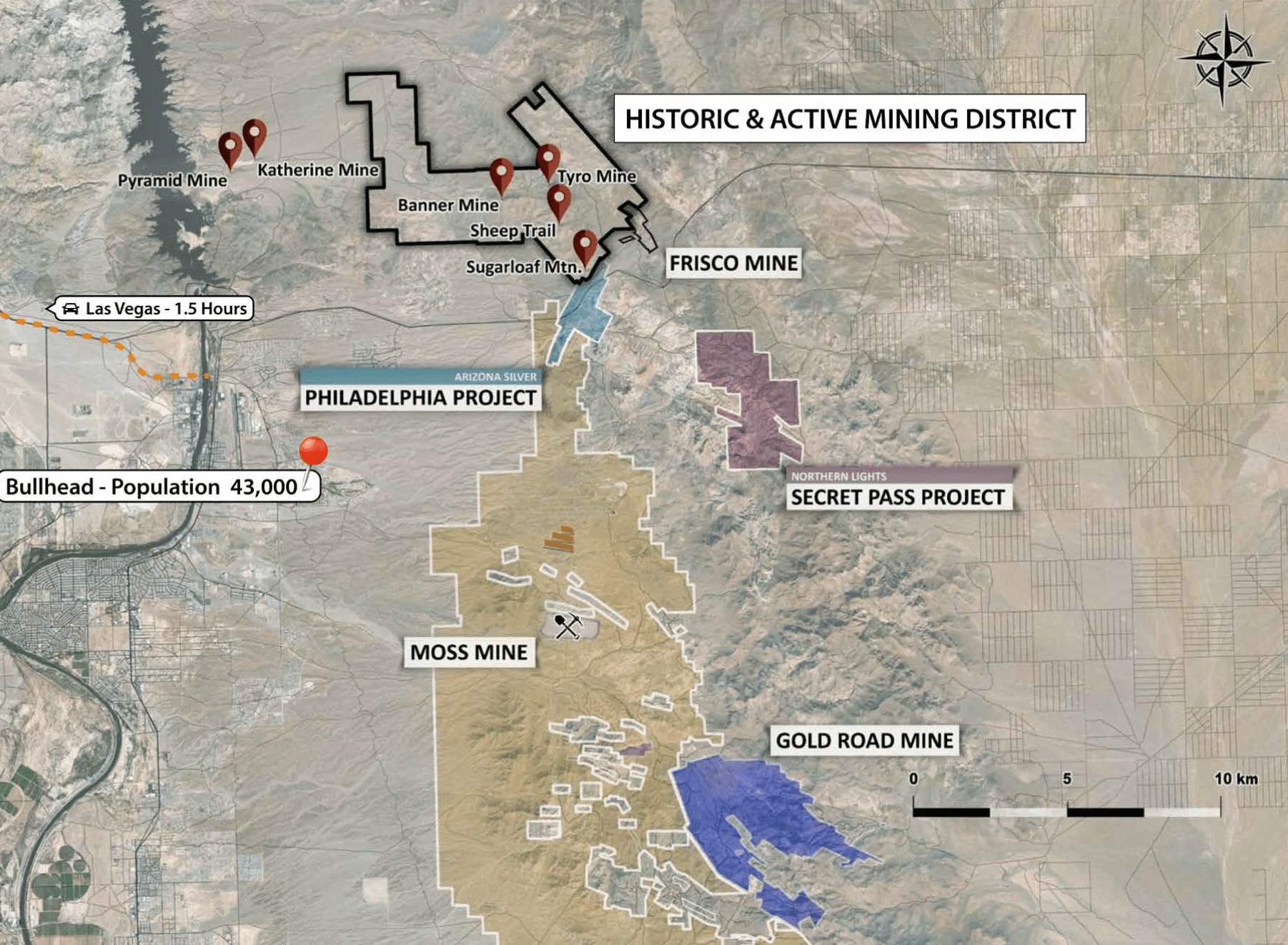
The Gold Chain project, West Point’s flagship project, is just 1.5 hours by car from Las Vegas and enjoys excellent access to infrastructure given the proximity to labour (Bullhead City has a population of approximately 43,000 and is just about 10 kilometers away from the project), access to power while the company also owns the water rights that are associated with the patented claims (the project consists of a mix of patented claims and BLM land).
In January, the company released the assay results from the first two holes that were drilled as part of its eight hole, 1,264 meter core drill program that was completed in the fourth quarter of last year and confirmed the interesting consistency of the mineralization at the Tyro target.
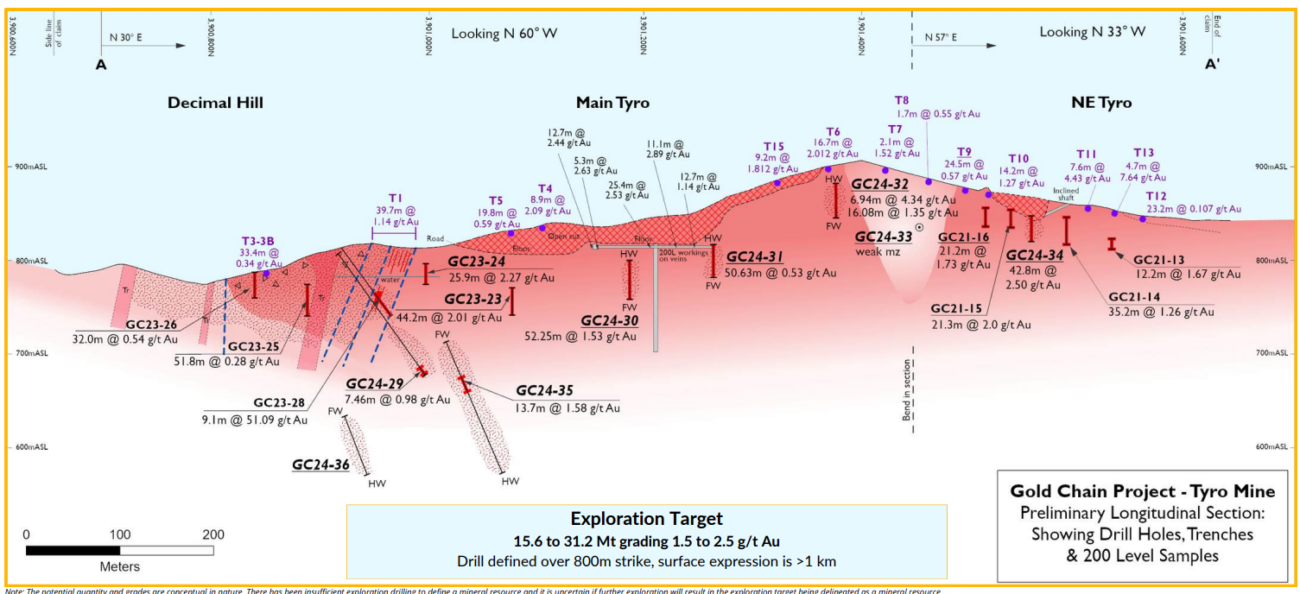
Hole GC24-30 encountered 52.25 meters of 1.53 g/t gold starting just 43.5 meters downhole, and this interval included a higher grade zone of 36.1 meters of 2.02 g/t gold. The second hole the company reported on was hole 31 which encountered 50.65 meters of 0.53 g/t gold, starting at a down-hole depth of just 51.3 meters. While hole two clearly is weaker than the first hole, 0.53 g/t should be above the traditional cutoff grade of oxide-hosted gold mineralization in that part of the world. The company doesn’t have a resource yet, so there is no official cutoff grade for the Gold Chain project, however similar oxide projects in Nevada and Arizona have substantially lower cutoff grades with the nearby Moss mine applying a cutoff grade of 0.21 g/t for its resource calculation.
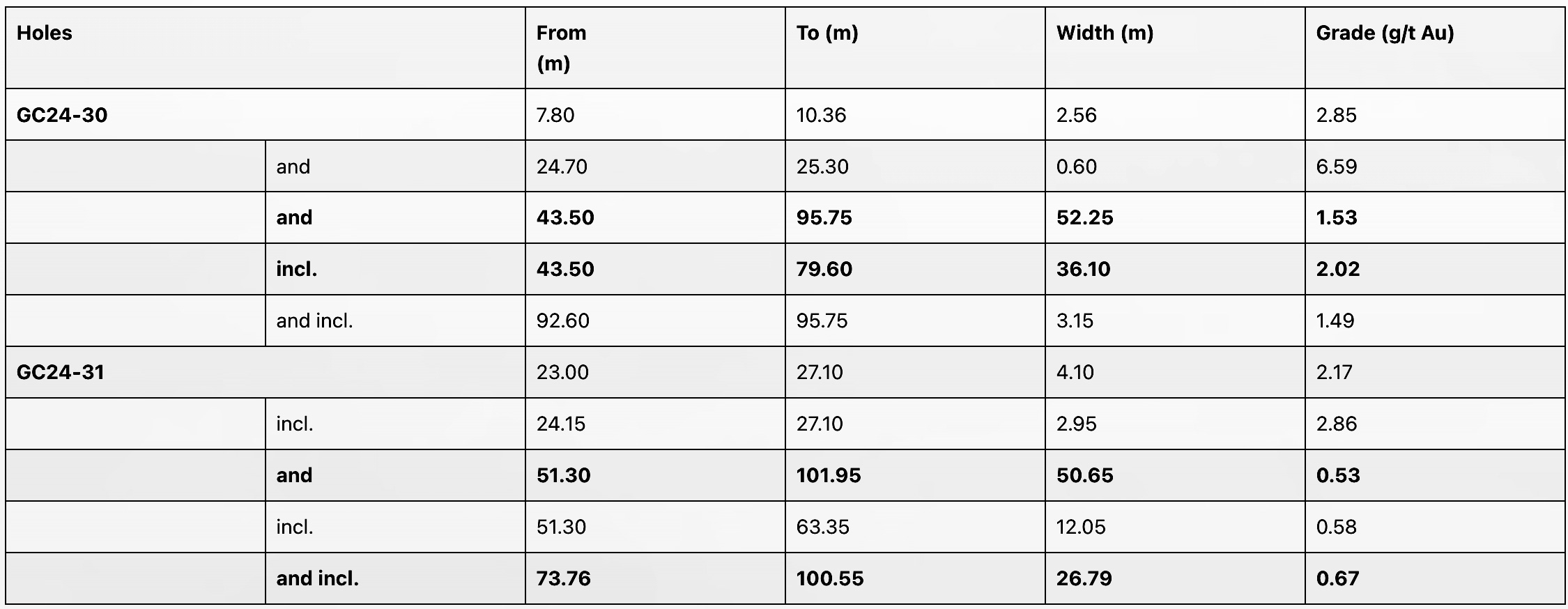
The company also mentioned that both holes intersected additional mineralized zones in the hanging wall of the deposit with intervals like 2.56 meters of 2.85 g/t gold and 4.1 meters of 2.17 g/t gold closer to surface. While these intervals are narrower, the grades are higher while the location of the additional mineralization could expand the width of the mineralized zone. That could have a positive impact on the strip ratio. The company started an infill sampling program of the holes to see if there is additional mineralization that may have been missed and the results of that program should be out in a few weeks.
The results of the first two holes were followed up on with the release of the assay results of the six remaining holes. As five of those six holes also contained gold mineralization, West Point Gold’s hit ratio is pretty high as the gold mineralization was encountered in seven of the eight holes. As the table below shows, the gold values in all holes have grades that are higher than the 0.21 g/t gold cutoff grade applied at the nearby Moss mine. And although hole 29 was unable to replicate the thick interval of high-grade mineralization that was encountered in that area, finding 16 meters of rock at an average grade of 0.56 g/t gold at surface clearly will help to add low-strip ounces to a future maiden resource.
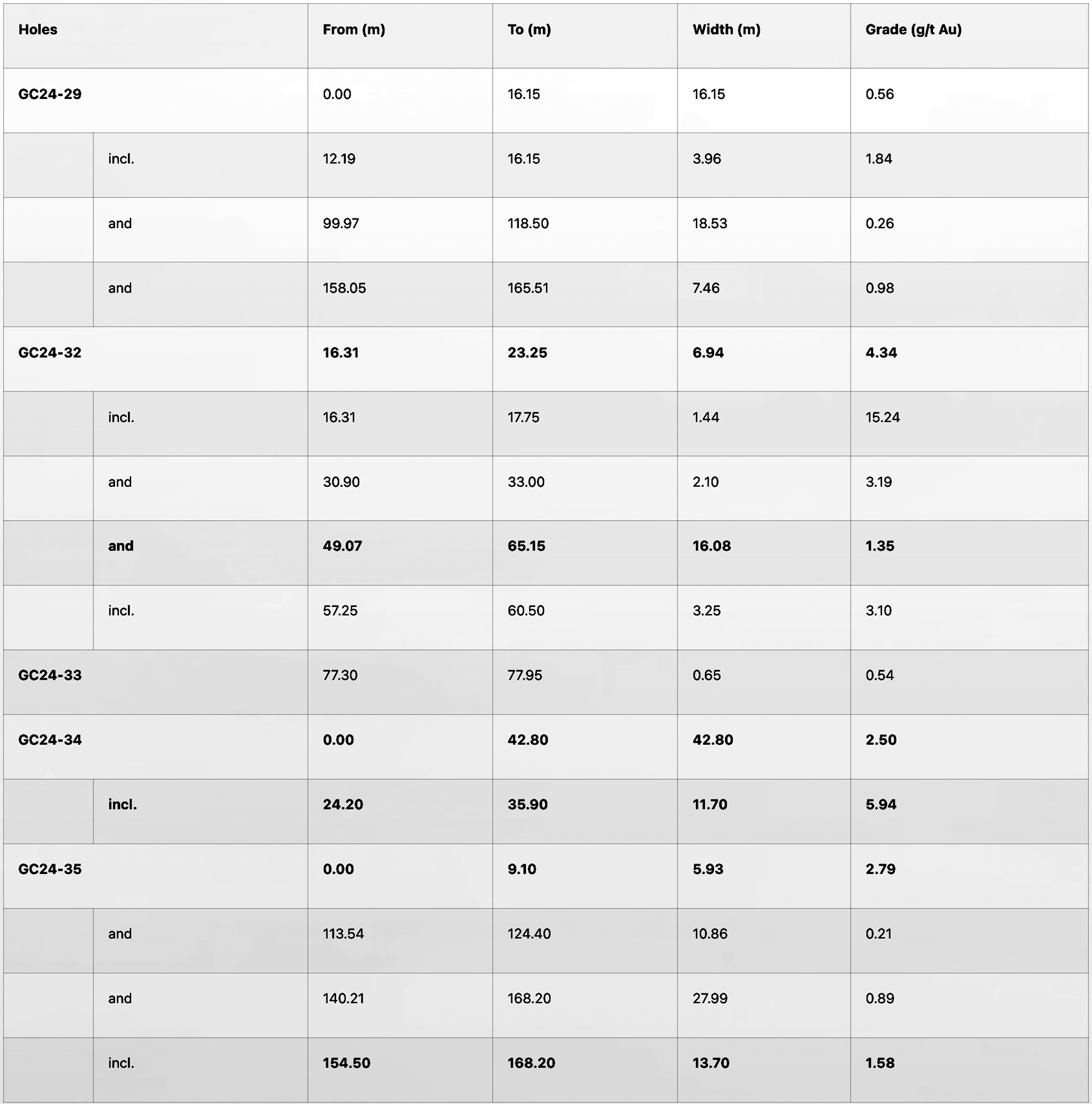
The most impressive result was of course the 42.8 meters containing 2.50 g/t gold in hole 34 as that interval doesn’t just contain high-grade gold mineralization (for an open pit oxide project), the mineralization literally started at surface. The same comment is valid for hole 35 where mineralization started at surface.
As you can see on the image below, holes 30 to 34 were drilled towards the North of the Tyro zone. That’s exactly what one of the company’s consultants (I won’t mention MR by name here) predicted, and this just further emphasizes the consistency of the deposit.
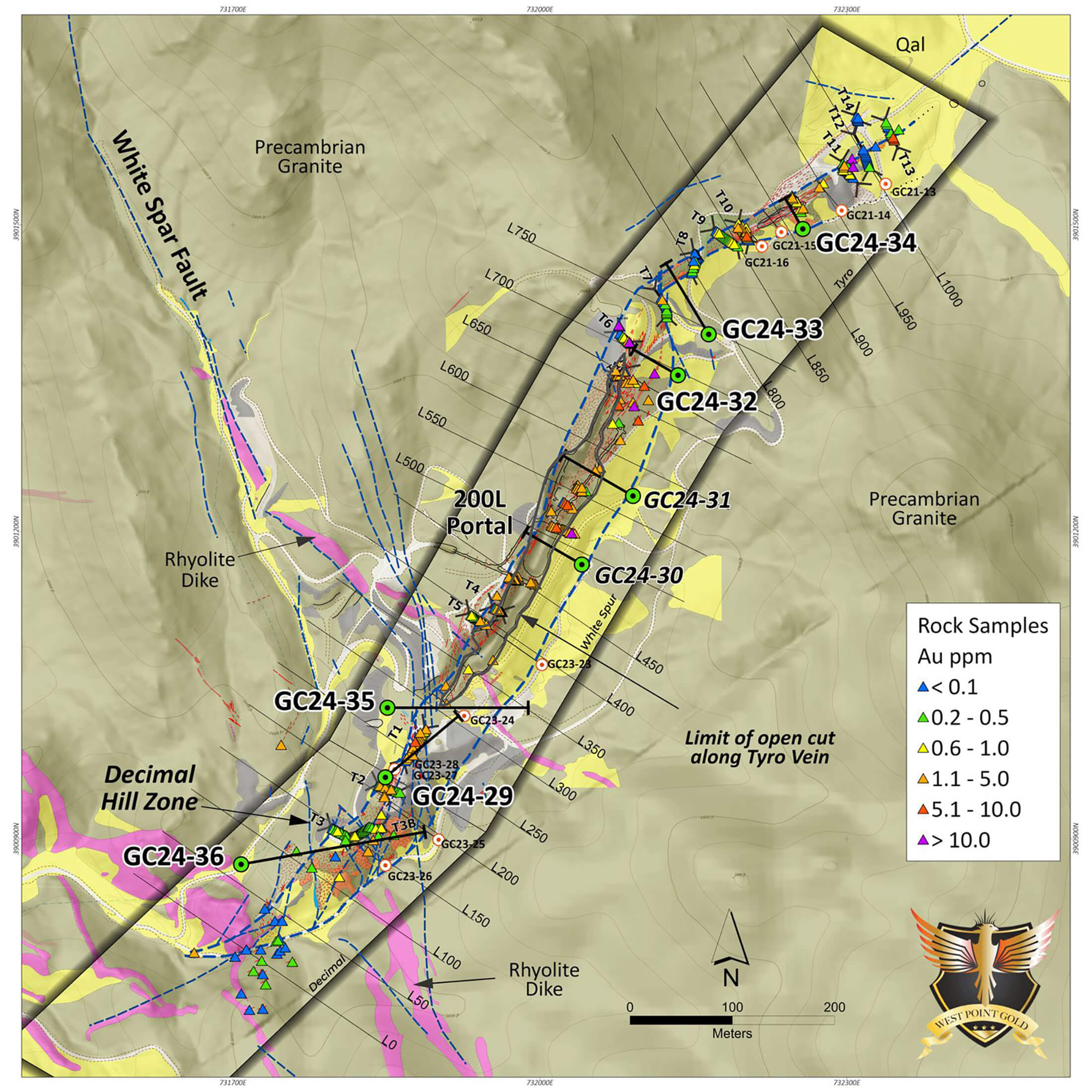
The mineralization at the Tyro Main Zone was developed between two almost-parallel structures running in a southwest-northeast direction.
The company reconfirmed its exploration target of 15.6-31.2 million tonnes at an average grade of 1.5-2.5 g/t gold implying a target of 750,000-2.5 million ounces of gold.
The icing on the cake? The Graben target
Seeing how the mineralization at Tyro seems to be running in a southwest-northeast direction, there is one interesting exploration target located right outside the patented land. The Frisco Graben is located on the BLM land but that doesn’t have to be a major deterrent considering Arizona is a mining-friendly state.
The Frisco Graben is interesting as it appears to be a pretty similar target to the Silicon deposit that’s currently being expanded by AngloGold Ashanti (AU). As you know, AngloGold’s project in Nevada (including the assets it acquired as part of the Corvus Gold takeover where West Point CEO Quentin Mai was working in corporate development) is located on the same Walker Lane Trend, so it’s not surprising to see initial similarities.
Of course drilling a Graben target isn’t something you should do with two or even five holes. As you can see below, the target is pretty sizeable with a total projected surface area of 4,000 meters by 750 meters, with the graben defined by two separate faults. It would make more sense for West Point Gold to beef up its balance sheet and only tackle the Graben target once it can comfortably afford a 15-20 hole drill program.
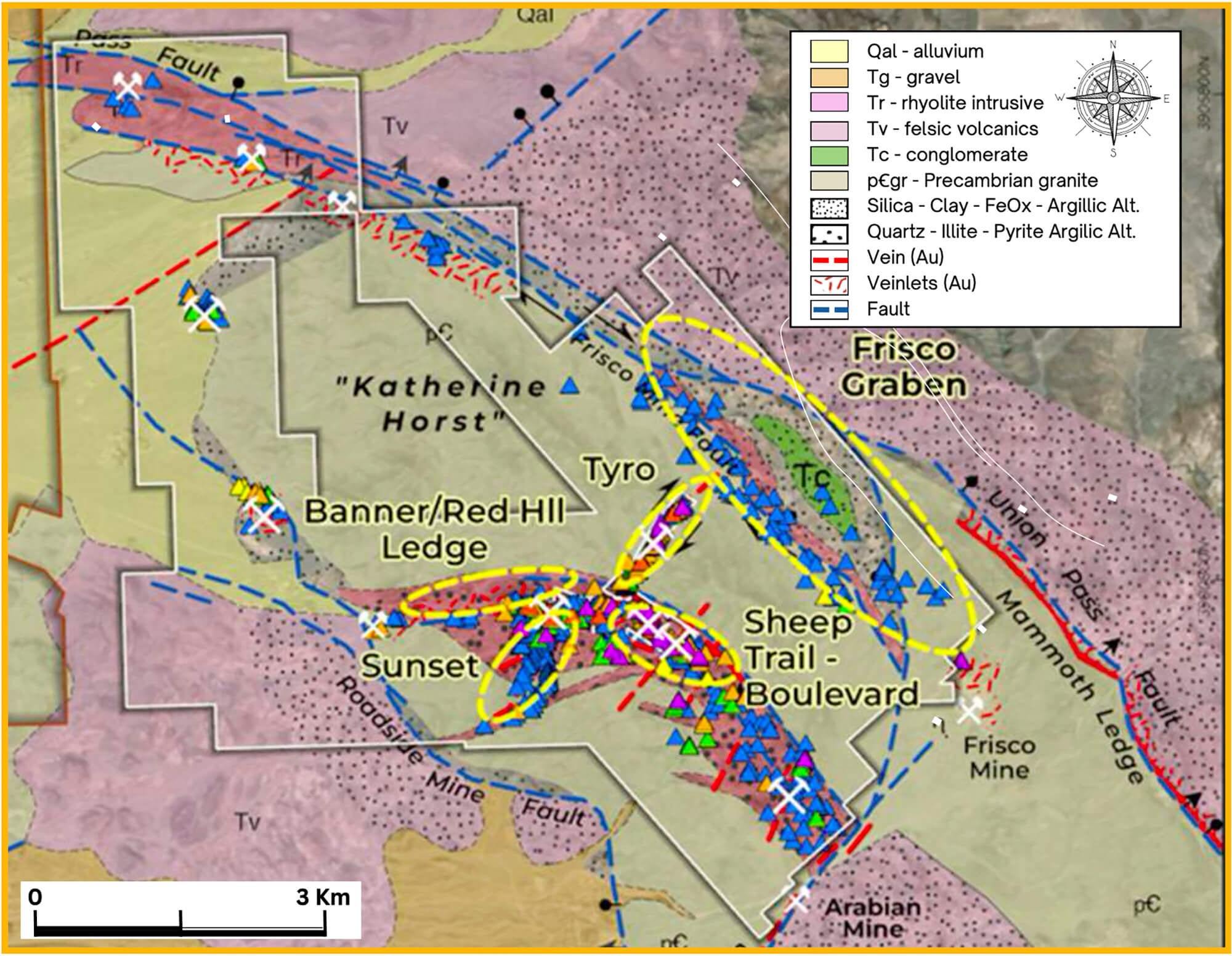
The ’easiest’ target (even though the theory sounds acceptable, it still is exploration and nothing is ever easy) would be the zone where the Tyro vein system intersects the Frisco mine fault, but again, it only makes sense to drill-test targets like this if and when West Point Gold can afford a dozen holes.
In its corporate presentation, West Point Gold mentions there are ‘multiple multi-million ounce targets’ on the Gold Chain land package. The image below highlights all exploration targets.
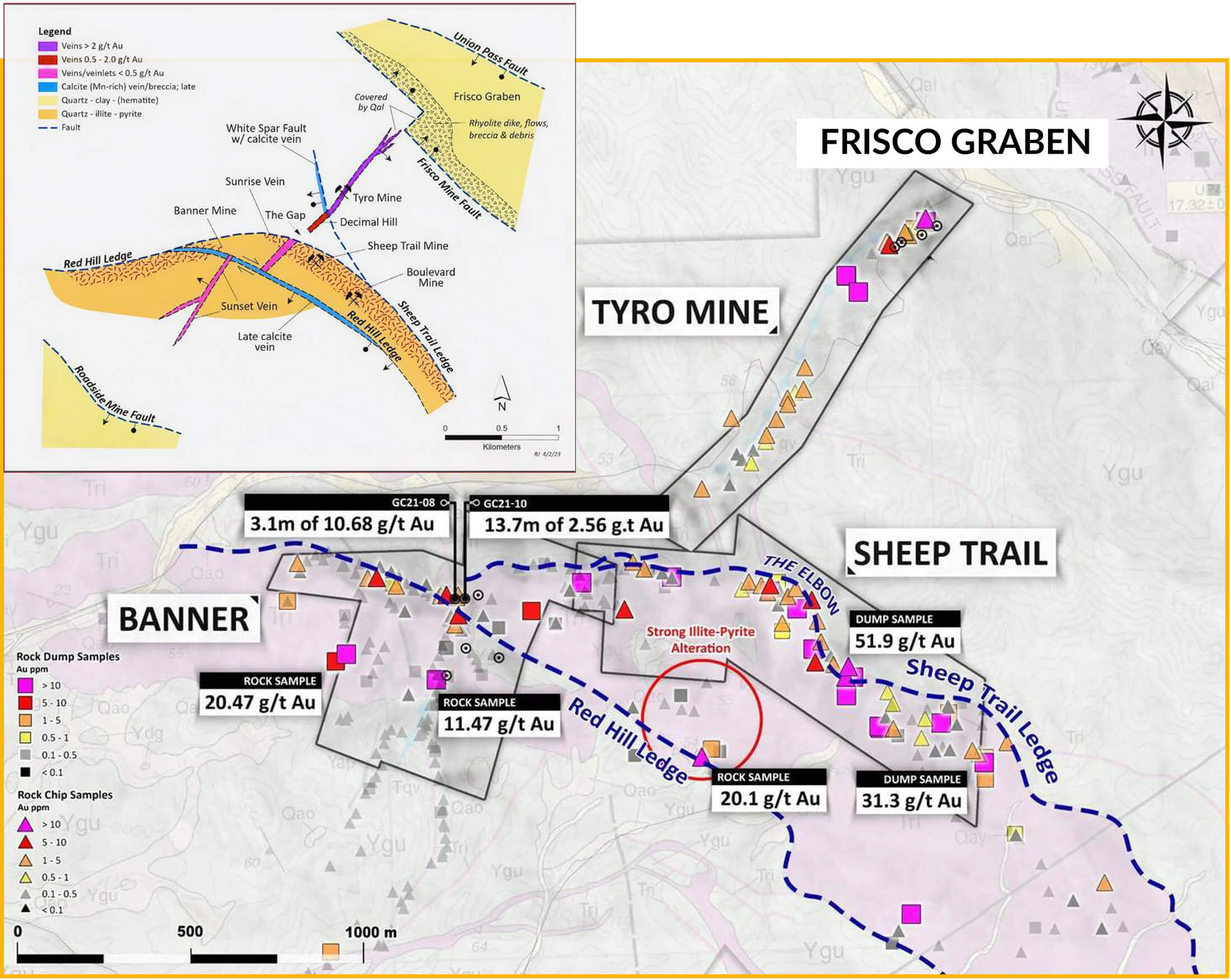
West Point Gold has been focusing on the Tyro Main Zone, which makes sense considering we agree this likely provides the easiest path towards a maiden resource estimate, but it is clear there are numerous targets on the land package. And those targets don’t all have to have multi-million ounce potential; having a handful of satellite deposits even with just a few hundred thousand ounces each would be value-accretive in a potential development scenario given the proximity to the Tyro zone.
West Point Gold will for sure be able to keep its exploration team busy in the years to come given the abundance of targets to follow up on.
The Nevada assets
To be clear, right now we are only interested in West Point Gold for its Arizona-based Gold Chain project as we see a clear path forward there towards a maiden resource calculation, but it’s perhaps equally important to emphasize West Point Gold isn’t a one-trick pony as the company has three projects in Nevada in its asset portfolio.
The Jefferson Canyon and Jefferson North projects are within walking distance from Kinross Gold’s (KGC, K.TO) Round Mountain gold mine which has just 2 million ounces left in its reserves (for a remaining mine life of approximately 7-8 years), 3.3 million ounces in its measured indicated resources (likely including the reserves) and 1.5 million ounces in its inferred resources. The average grade at Round Mountain is approximately 0.9 g/t for the M&I resources as per Kinross’ 2023 resource and reserve statements (the 2024 resource and reserve updates have not been published yet).
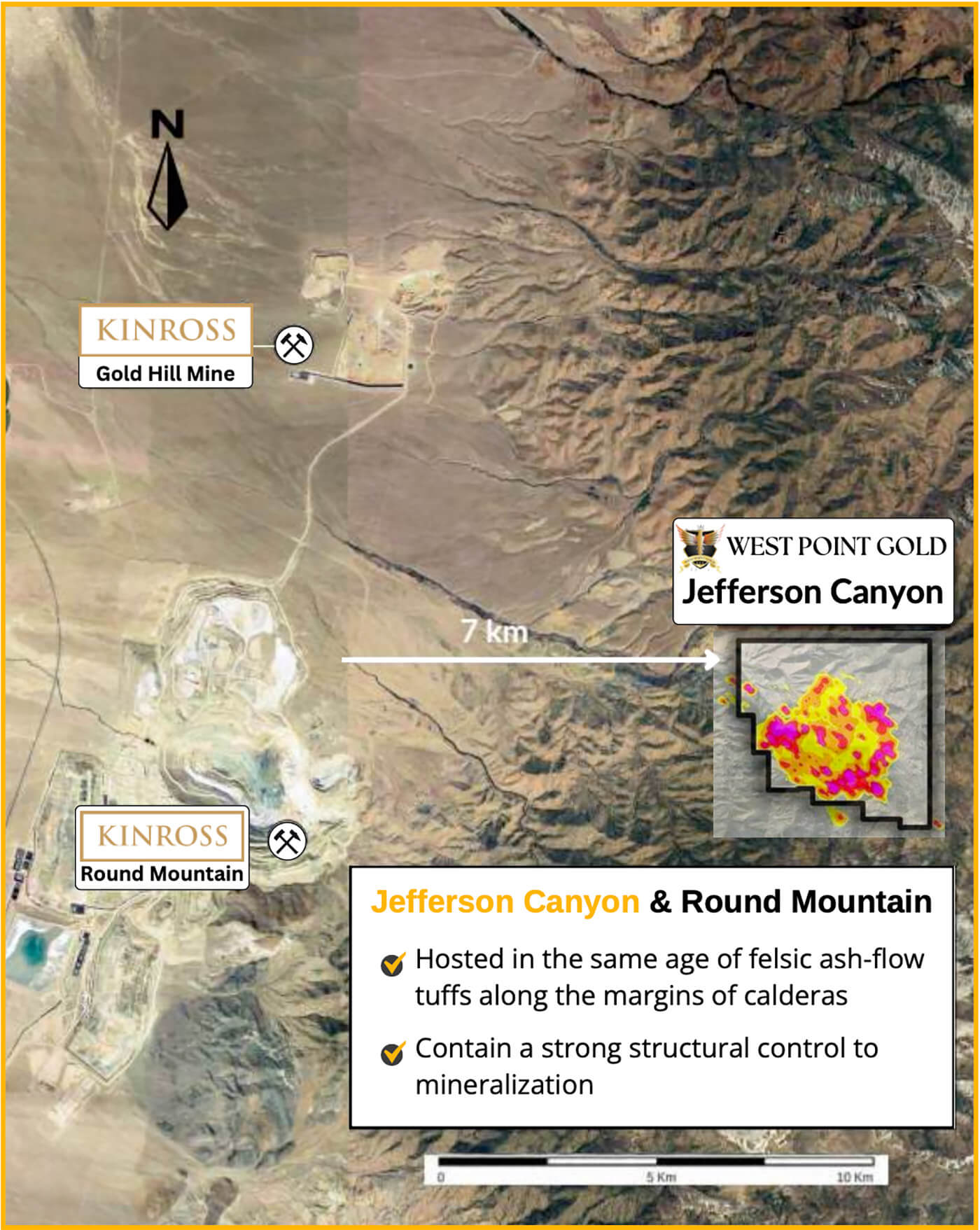
On Jefferson Canyon, Kinross Gold has entered into an earn-in agreement whereby Kinross is required to spend US$600,000 on exploration while also making sure the project remains in good standing. Should the exploratory work be to Kinross’s satisfaction, it can acquire a 70% stake in the project by making a US$5M lump sum payment while the company can also purchase an additional 10% stake by making another US$5M cash payment. While Jefferson North is not part of the Kinross agreement, we wouldn’t be surprised to see Kinross knock on West Point’s door to see if the agreement could be expanded (but of course Kinross could also just decide to drop Jefferson Canyon and mentally prepare itself to shut down the Round Mountain gold mine. But given the grades at Jefferson Canyon that were encountered in historical drill programs (shown below on the image), the project definitely warrants some attention whether it is Kinross-funded or not.
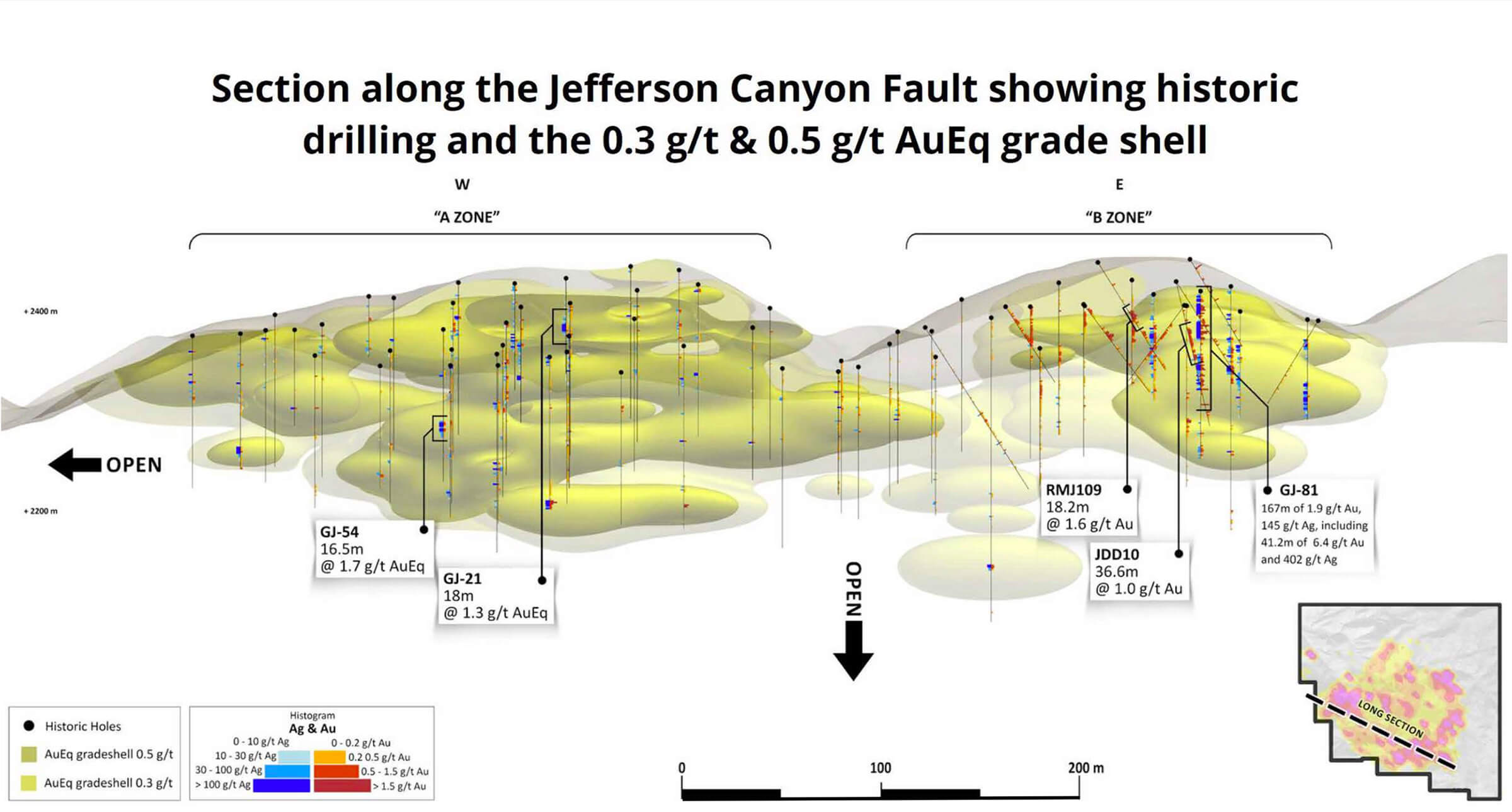
The company also has the TipTop project in Nevada but as no activities are planned there in the near future, we won’t spend too much time on the secondary projects. We think Gold Chain is where the value is at and hope and expect the exploration dollars will be spent there.
The company is cashed up after a C$6.1M raise
As part of the new management team coming in, West Point Gold was required to raise C$4M to ensure the projects would be able to get the attention they deserve. West Point didn’t make it a secret that any ‘excess’ cash it would be able to raise would be used for general working capital purposes, including marketing.
Last week/earlier this week, the company announced it increased its marketing agreement with i2i Marketing Group by US$1M to US$1.25M. That’s one of the highest amounts we have ever seen to be spent on just one campaign. We enquired about this with the company, and CEO Quentin Mai explained that as the good drill results that were released in January fell on deaf ears as the market didn’t seem to care too much, a more aggressive marketing approach is warranted to get more eyes on the stock. It’s a lot of money and we will see in a few months whether or not the marketing program was worth it.
In any case, the company won’t need to raise any cash before the fall although it should of course always take advantage of financing windows if/when those open up for junior exploration again.
That being said, the C$6.15M raise was priced at C$0.25 per unit with each unit consisting of one common share as well as half a warrant. Each full warrant allows the warrant holder to acquire an additional share at C$0.40 for a period of two years. Combined with the pre-existing warrant base, the warrant breakdown looks like this:
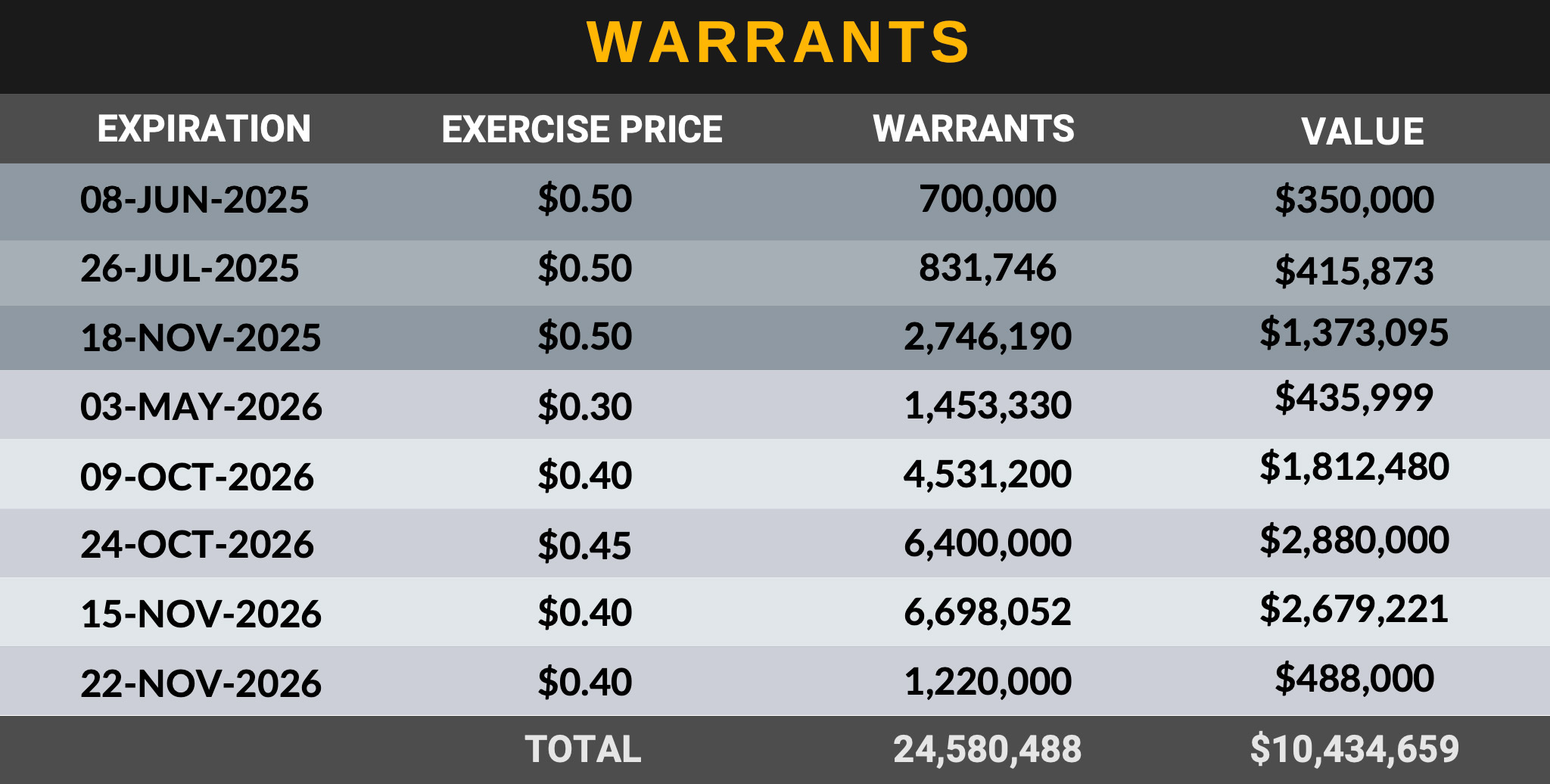
It undoubtedly is a secondary target for this year’s marketing campaign to see some of the warrant money come into the treasury. There of course is no guarantee (the acceleration clause on the C$0.40 warrants only kicks in when the share price trades above C$0.60 for a period of 10 consecutive days) but it’s not unthinkable we will see some voluntary warrant exercises should the share price move into the C$0.40-0.50 range. That of course is a big ‘if’, but could be a form of secondary financing and would likely be preferred over going back to the market.


Management
Quentin Mai — CEO & President
With over 25 years of experience in driving successful early-stage growth from mineral discovery through to production, Quentin has a proven track record in the mining industry. He spent a decade with Corvus Gold, culminating in its acquisition by AngloGold Ashanti for CDN$570 million in 2022. Additionally, He played a key role in managing Business Development for International Tower Hill, steering it from inception to a peak valuation exceeding $800 million in market capitalization in 2010, and contributing to raising over $250 million in capital.
Derek Macpherson — Executive Chairman
Derek Macpherson has over 10 years of experience in mining capital markets, holding positions at multiple boutique and bank-owned investment banks. He previously held senior roles in Investment Banking and Research at Red Cloud Securities. Before transitioning to capital markets, Derek worked as a metallurgist, gaining valuable technical expertise in mineral processing. He is currently the Executive Chairman of Olive Resource Capital (TSXV:OC) and a Director of Omai Gold Mines (TSXV:OMG).
John McNeice — CFO
With 30 years of experience as a Professional Chartered Accountant, John has been instrumental in the financial leadership of various mining and resource companies. He was part of the team that founded Gold79 (formerly Aura Resources) and successfully brought it public in 2004. Currently, John serve’s as the Chief Financial Officer for C3 Metals (TSXV:CCM) and Lahontan Gold Corp (TSXV:LG). As the former CFO of UR-Energy Inc. (2004-2007), He has played a pivotal role in its formation, initial public offering (IPO), and early capital raises, contributing to its foundational growth and success.
Rob Johansing — VP Exploration
With 45 years of experience in mining, mineral development, and exploration, Rob’s career has been predominantly focused on low-sulfidation epithermal gold systems. From 1993 to 2002, He served as Project Manager and President of Kinross El Salvador, S.A. de C.V., overseeing significant initiatives in the region. Since 2002, Rob has worked as an exploration and mining consultant, collaborating with multiple companies to drive successful projects and advance mineral development efforts.
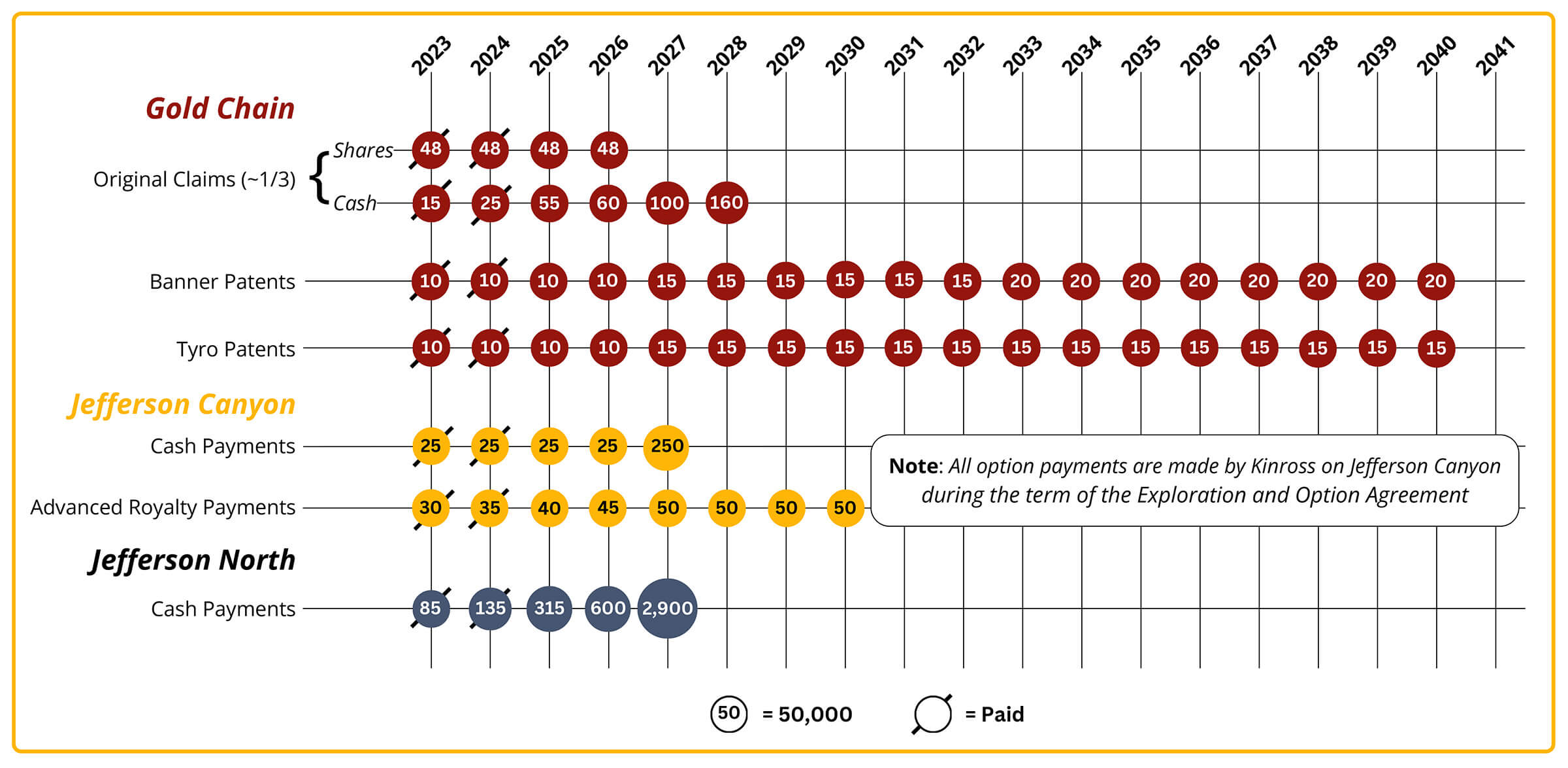
Conclusion
We expect the Gold Chain project to be the main driver of value for West Point Gold. The initial holes drilled by the company were a success and the mineralization was further extended to the north. Additionally, resampling the hanging wall could increase the width of the mineralized zones which would move more tonnes from the waste category to a resource status in its maiden resource calculation.
West Point Gold has a very clear exploration target but the range between 750,000 ounces and 2.25 million ounces is still quite wide. We expect the upcoming 3,000 meter RC drill program that will start later this month to further increase the company’s confidence level in the project and hopefully this will lead to a maiden resource calculation as that would help to underpin the company’s valuation.
West Point Gold is nicely cashed up and shouldn’t need to raise additional cash until after the summer. However, we hope the announced marketing program will help to bring in some warrant money to fill up the treasury again.
Disclosure: The author has a long position in West Point Gold. West Point Gold is a sponsor of the website. Please read the disclaimer.
